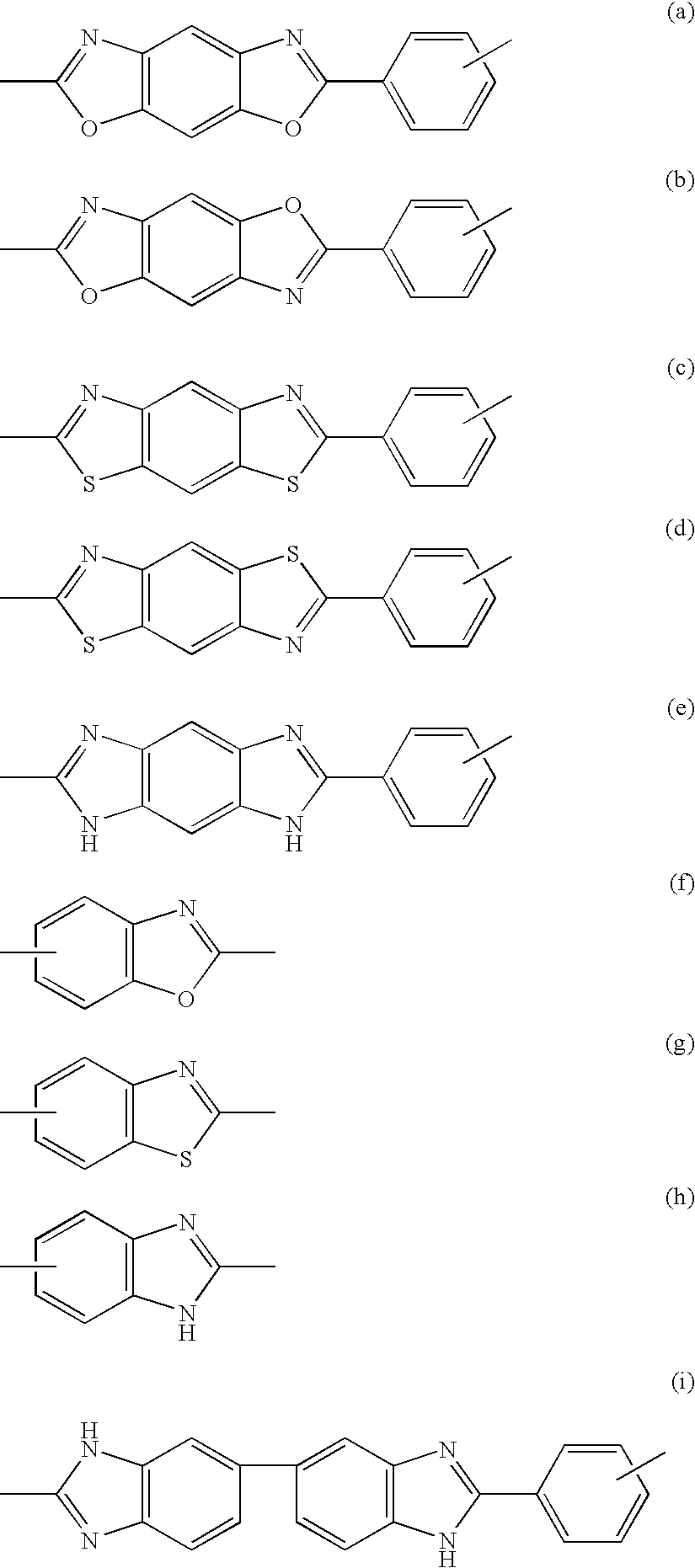Polybenzazole fiber and use thereof
- Summary
- Abstract
- Description
- Claims
- Application Information
AI Technical Summary
Benefits of technology
Problems solved by technology
Method used
Image
Examples
example 1
[0101] Under a stream of a nitrogen gas, 4,6-diamino-resorcinol dihydrochloride (334.5 g), terephthalic acid (260.8 g) and 122% polyphosphoric acid (2,078.2 g) were stirred at 60° C. for 30 minutes. Then, the temperature was gradually increased, so that the mixture was reacted at 135° C. for 20 hours, at 150° C. for 5 hours, and at 170° C. for 20 hours. The resultant poly(p-phenylenebenzobisoxazole) dope (2.0 kg) had an intrinsic viscosity of 30 dL / g at 30° C., which was measured by using a methanesulfonic acid solution. To the above dope (2.0 kg) was added 29H,31H-phthalocyaninate(2-)-N29,N30,N31,N32 copper (15.2 g), and the mixture was stirred. Then, the solution was spun into filaments by the foregoing method. The resultant filaments were subjected to a storage test at high temperature and high humidity (80° C. and 80 RH %) and a light exposure test. The results are shown in Table 1.
example 2
[0102] To a poly(p-phenylenebenzobisoxazole) dope (2.0 kg) having an intrinsic viscosity of 29 dL / g prepared in the same manner as in Example 1 was added bisbenzimidazo[2,1-b:2′,1′-i]benzo[1mn][3,8]phenanthroline-8,17-dione (15.2 g), and the mixture was stirred. After that, the solution was spun by the foregoing method. The resultant filaments were subjected to a storage test at high temperature and high humidity (80° C. and 80 RH %) and a light exposure test. The results are shown in Table 1.
example 3
[0103] To a poly(p-phenylenebenzobisoxazole) dope (2.0 kg) having an intrinsic viscosity of 29 dL / g prepared in the same manner as in Example 1 was added 9,19-dichloro-5,15-diethyl-5,15-dihydrodiindlo[2,3-c:2′,3′-n]triphenodioxazine (15.2 g), and the mixture was stirred. After that, the solution was spun by the foregoing method. The resultant filaments were subjected to a storage test at high temperature and high humidity (80° C. and 80 RH %) and a light exposure test. The results are shown in Table 1.
PUM
| Property | Measurement | Unit |
|---|---|---|
| Temperature | aaaaa | aaaaa |
| Temperature | aaaaa | aaaaa |
| Fraction | aaaaa | aaaaa |
Abstract
Description
Claims
Application Information
 Login to View More
Login to View More - R&D
- Intellectual Property
- Life Sciences
- Materials
- Tech Scout
- Unparalleled Data Quality
- Higher Quality Content
- 60% Fewer Hallucinations
Browse by: Latest US Patents, China's latest patents, Technical Efficacy Thesaurus, Application Domain, Technology Topic, Popular Technical Reports.
© 2025 PatSnap. All rights reserved.Legal|Privacy policy|Modern Slavery Act Transparency Statement|Sitemap|About US| Contact US: help@patsnap.com

